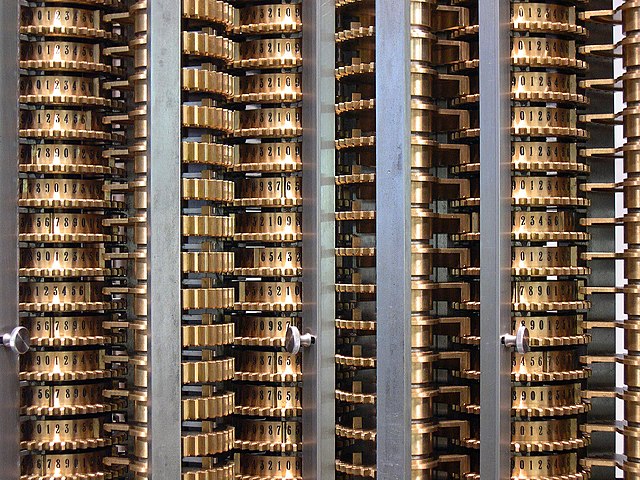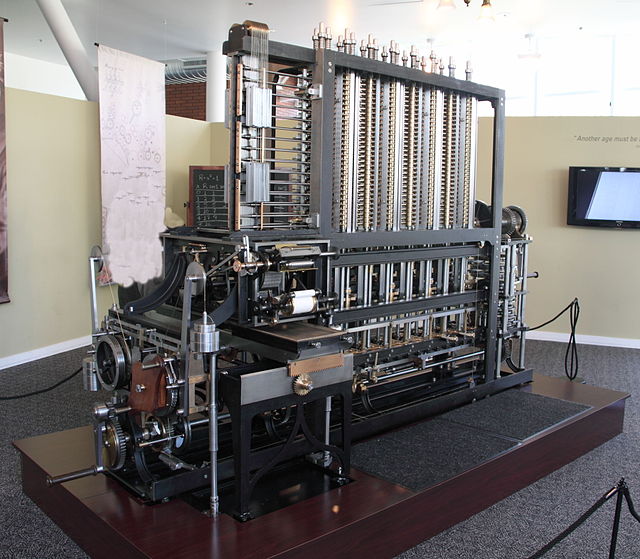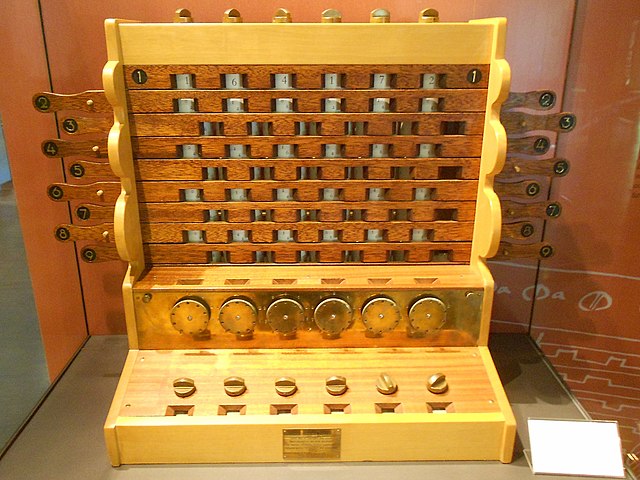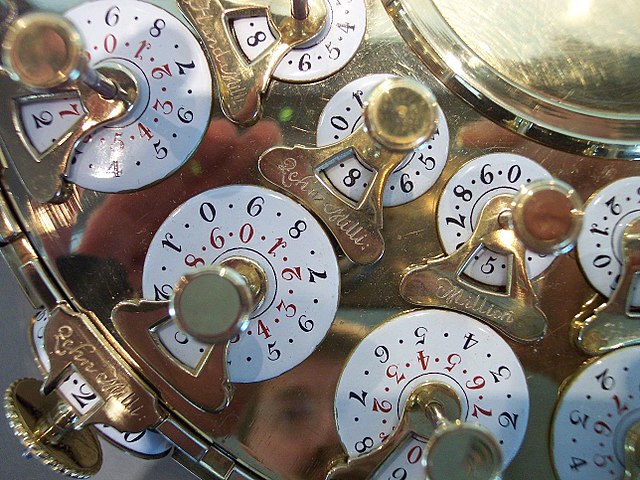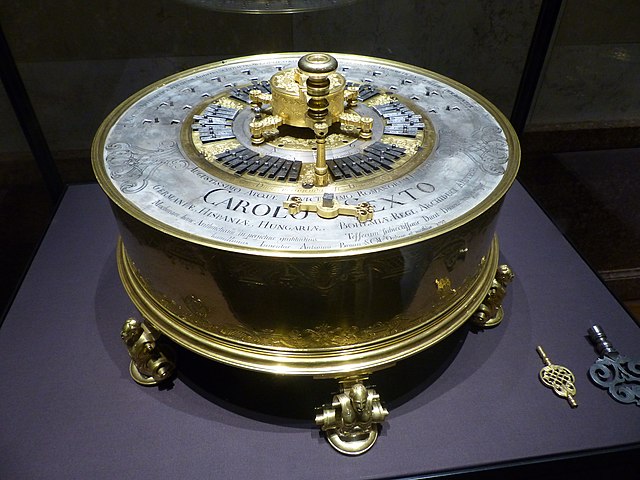A difference engine is an automatic mechanical calculator designed to tabulate polynomial functions. It was designed in the 1820s, and was first created by Charles Babbage. The name difference engine is derived from the method of divided differences, a way to interpolate or tabulate functions by using a small set of polynomial co-efficients. Some of the most common mathematical functions used in engineering, science and navigation are built from logarithmic and trigonometric functions, which can be approximated by polynomials, so a difference engine can compute many useful tables.
The London Science Museum's difference engine, the first one actually built from Babbage's design. The design has the same precision on all columns, but in calculating polynomials, the precision on the higher-order columns could be lower.
Close-up of the London Science Museum's difference engine showing some of the number wheels and the sector gears between columns. The sector gears on the left show the double-high teeth very clearly. The sector gears on the middle-right are facing the back side of the engine, but the single-high teeth are clearly visible. Notice how the wheels are mirrored, with counting up from left-to-right, or counting down from left-to-right. Also notice the metal tab between "6" and "7". That tab trips the carry lever in the back when "9" passes to "0" in the front during the add steps (Step 1 and Step 3).
Fully operational difference engine at the Computer History Museum in Mountain View, California
A mechanical calculator, or calculating machine, is a mechanical device used to perform the basic operations of arithmetic automatically, or (historically) a simulation such as an analog computer or a slide rule. Most mechanical calculators were comparable in size to small desktop computers and have been rendered obsolete by the advent of the electronic calculator and the digital computer.
Four of Pascal's calculators and one machine built by Lépine in 1725, Musée des Arts et Métiers
Replica of Schickard´s calculator
Detail of a replica of an 18th-century calculating machine, designed and built by German Johann-Helfrich Müller.
A mechanical calculator from Anton Braun, dated 1727


